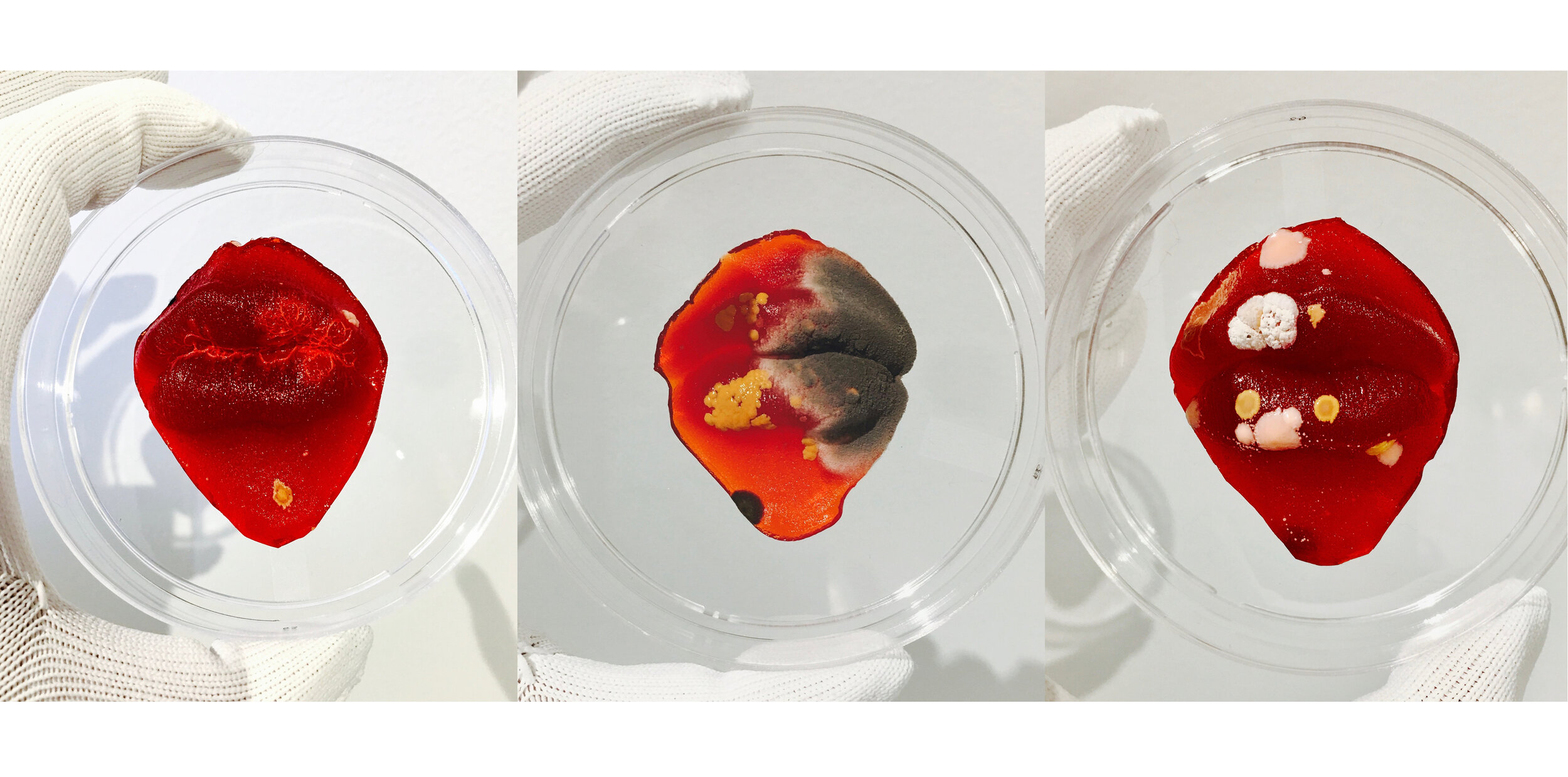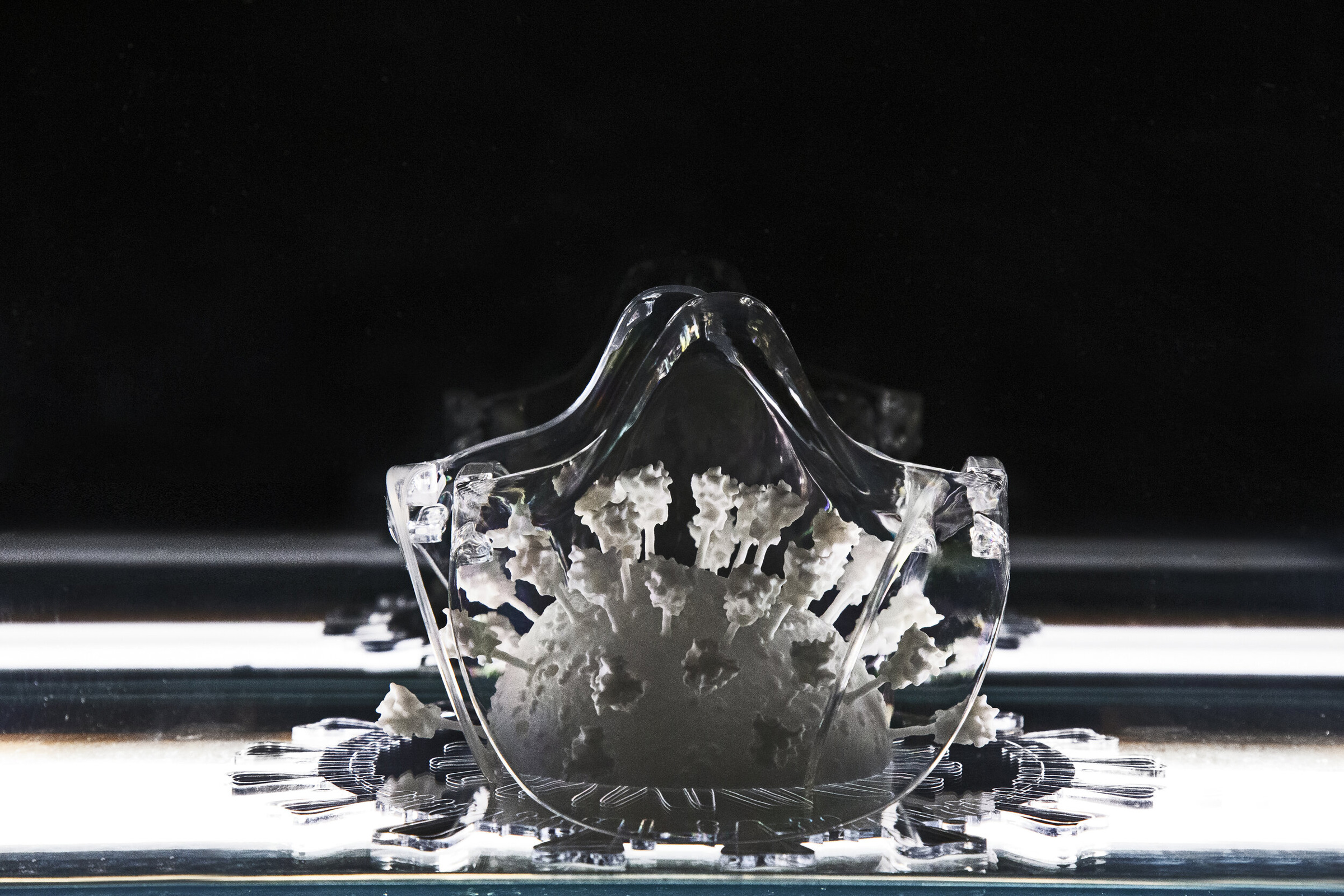
“I think that the process of creation and the process of critical evaluation must occur separately”
Research-based artist Ani Liu works at the intersection of art and science to explore the reciprocal relationships between science, technology and their influence on human subjectivity, culture, and identity. Graduating with a Masters of Architecture from the Harvard Graduate School of Design and a Master of Science from MIT Media Lab, Liu’s work has been exhibited internationally and featured by the likes of National Geographic, VICE, Mashable, TED, WIRED and more.
Liu’s approach to art making is multidisciplinary and centred around themes of gender politics, biopolitics, labour, simulation and sexuality. Liu’s work interrogates how our plastic subjectivity goes through modifications and expansions with technological and scientific development. It is in this realm of plasticity that Liu operates as an artist to further explore the impact of technology on culture and identity, and ultimately, what it means to be human.
NR Magazine peaks with Liu to learn more about speculative design and storytelling in her work and her hopes for the future.
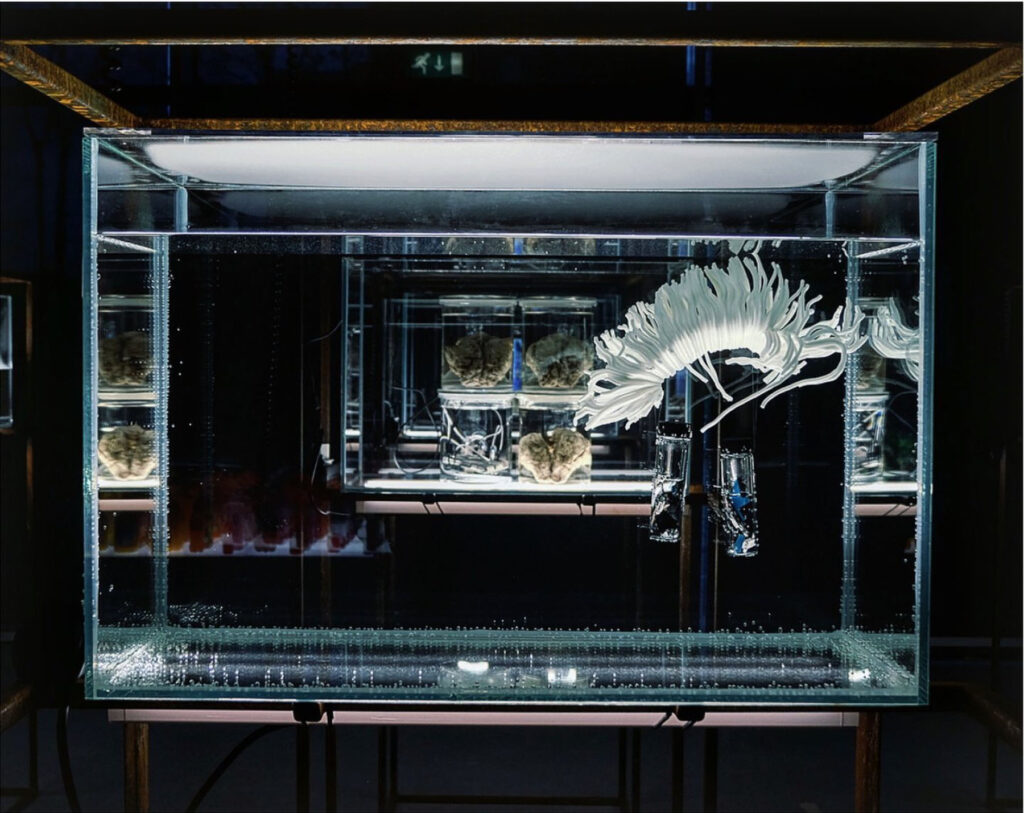
What inspired you to start working at the intersection of art and science?
As a first-generation immigrant, certain values were deeply ingrained in me from a young age – to work hard, to study math and science, to try to make a better life for myself than the one my parents had. For reasons I still don’t understand, I loved art from the beginning, but given the working-class context that I grew up in, I couldn’t imagine how to make a life of it. As a result, I studied architecture, which combines engineering, material science, physics and software, with design and culture. I think this was the beginning of my merging of art, science, and many other disciplines. My roots in architecture opened my eyes to thinking beyond rigid boundaries to create experiences that transcend each individual discipline.
Your work involves what you call ‘speculative storytelling’. Could you talk a bit more about that? And what does speculative design mean to you?
I am always fascinated by the pulse of technology, and all the breakthroughs rapidly happening in synthetic biology, machine learning, etc. For me, speculative design is a means of making work to reflect on where we are going societally, in the midst of this rapid trajectory. I think this is the value of good speculative design; it can draw the viewer into the world and ask questions that conventional design does not. Some of my heroes in this domain are Fiona Raby and Anthony Dunne, who have written extensively on the topic.
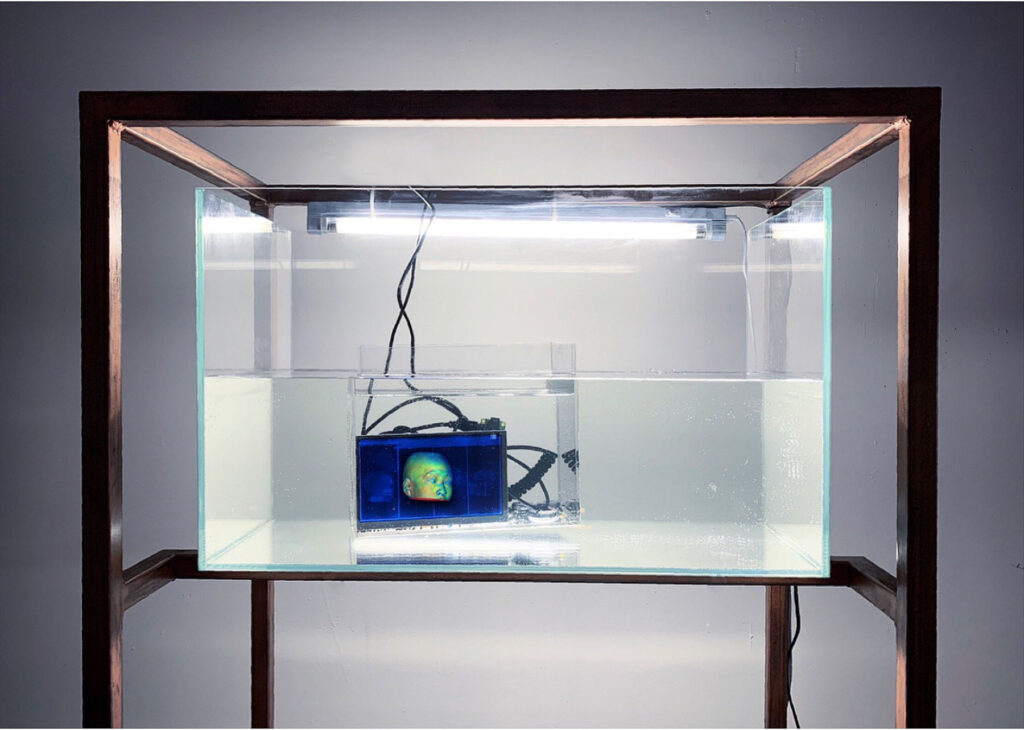
You’ve mentioned that you love speculative design that reveals something in the fabric of your reality that you weren’t previously aware of. Could you talk a bit more about that?
There is a quote by science fiction writer Frederic Pohl, where he says ‘a good science fiction story should be able to predict not the automobile, but the traffic jam.’ I think when you get into the heat of creating within the speculative domain, you essentially build an entire world out of a few artifacts, or a few moves in materiality. An artist and speculative fiction writer that I deeply admire is Margaret Atwood, for the ways she is able to build alternate worlds that scrupulously pierce into pressing issues of today.
In our cultural landscape, how important is interrogating the concept of identity to you and your practice?
It is constant! Identity is unstable and constantly shifting. It’s a construct that we each craft and perform differently in various contexts. I am interested in how technology interacts and co-creates the sense of self. Growing up in the time of internet chat rooms, as a teenager I spent time experimenting with different usernames and avatars, interested in ways I could escape my physical body in cyberspace.
“There is an awareness that the person on the other side of the screen is not who they appear to be, and yet we still consume it at face value sometimes.”
Watching people painstakingly craft their Tinder or LinkedIn profiles is fascinating to me. There is also a darker side to it – for instance the proliferation of beauty filters on social media can be linked to body image and self-esteem issues. Somehow, knowing that they are filters does not prevent us from holding ourselves up to literally simulated standards.
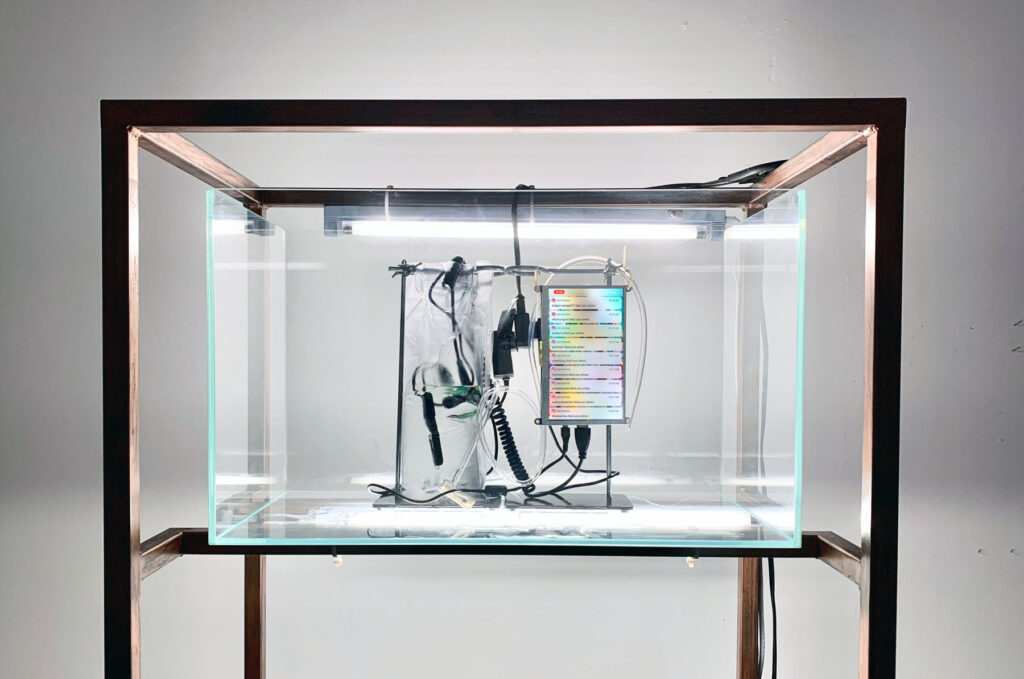
Reoccurring themes in your work include gender politics, biopolitics, labour, simulation and sexuality. What do you enjoy most about exploring these ideas in particular?
In my research, I enjoy the process of discovery and revelation, and the potential for cultural change. It is 2021 and we still live in a world with violent sexism. The right to education, healthcare and bodily autonomy are still things female identified persons struggle with. Through some of my works, such as Mind Controlled Sperm, A.I. Toys or Pregnancy Menswear, the hope is that it can contribute to a cultural conversation that can shift mindsets about how we perceive sex and gender.
Do you rely a lot on your intuition?
I do. I think that the process of creation and the process of critical evaluation must occur separately. I don’t always succeed, but I try to separate those days out in my studio. There are days when I attempt to make in a purely intuitive, non-judgemental way. There are other days when I return to edit the works more critically. The processes exist in a never-ending cycle.
How has living in New York affected your practice?
New York is expensive! I have had to be creative about my practice – I have had large studios and extremely tiny ones depending on the ebbs and flows of my life. I have become good at continuing to create work no matter the physical circumstances of my studio. During COVID I was locked out of my studio completely, and learned how to work from home, like many other people. I adapted my material palette to things that were more domestic friendly and less toxic.
Living in New York, I also spend a lot of time commuting, and have learned ways to fold it into my practice, either by drawing, writing, reading, or simply observing. I do feel incredibly lucky to be surrounded by so many museums and galleries. There is never a shortage of art to see. There are certain museums that are almost like temples to me – I have been visiting them since I was a child. I feel spiritually nourished every time I return.
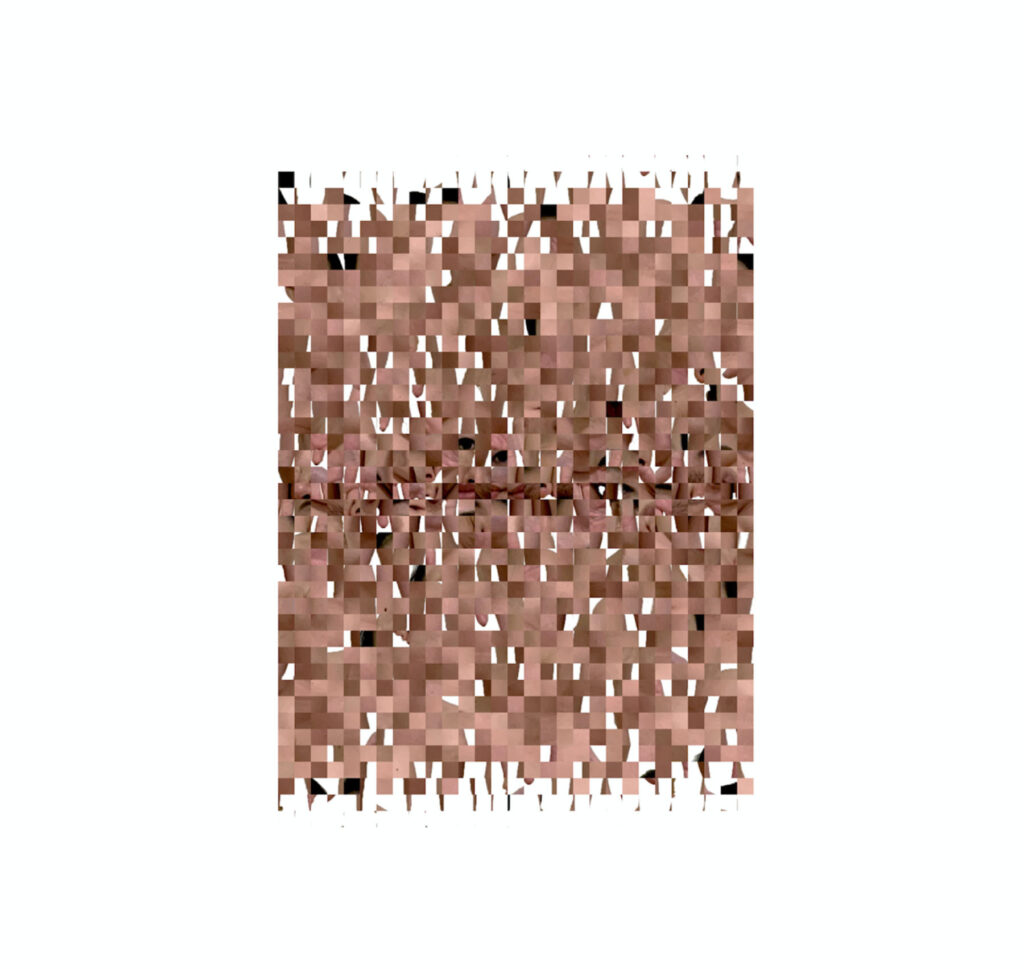
How important is exploring an emotional narrative in your work?
Extremely! I am an artist that practices at the intersection of art and science, and while the research component is very important to me, I think it is the emotional narrative that draws you in. It’s also that magical element of art making and art experiencing that drew me in from the beginning – the elements of mystery, contradiction and the transference of knowledge that is not necessarily verbal but deeply felt and understood.
In your 2016 TED talk you mentioned being ‘obsessed with olfaction as a design space’. How do you feel this compares to other kinds of sensory perception with regard to constructing an identity?
The art historian Caroline Jones has a wonderful quote about olfaction. She says (and I am paraphrasing), ‘smell is preverbal, and has no capacity to pretend.’
“As a human who can tend to be hyper cerebral and analytic, I love smell for the ways it continues to remind me that I am also an animal, with instincts, intuition, and involuntary bodily relations to the world.”
Olfaction as a design space tends to be underdeveloped in an increasingly hygienic and sterile world. I love the stories that can be told through the nose, and I am interested in how your own experiences, histories, and geographical memories remap experiences that different people have towards identical smells. What makes something smell disgusting, pleasurable, familiar, or erotic? How many of these reactions are cultivated, and are any of these reactions universal?
What’s your usual process when coming up with new ideas and research projects?
Sometimes it begins with a feeling – a feeling of sadness or longing for a particular memory, for instance. Other times, it begins with research – a paper that I read and bookmark and sparks a new idea. I try to keep a meticulous sketchbook and record of moments I find interesting to revisit in later projects.
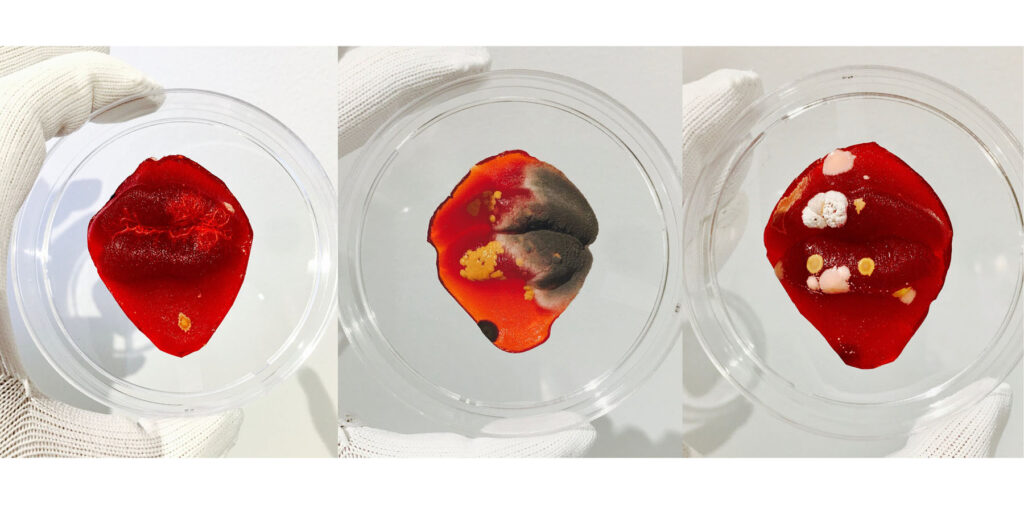
Your work is obviously very forward thinking and future-gazing. Do you ever feel drawn to working in the realm of nostalgia?
I actually love looking at retro depictions of the future, such as images of the future that were created in the 50s or 70s. They are simultaneously future gazing and nostalgic. I think I am attracted to these images because they often tell a better story of the time they were created. In some of these images,
“even though there are flying cars and robots everywhere, women are still depicted doing domestic chores and performing the traditional gender roles of the time.”
There is a strange emotional power to simultaneously holding both; I am also thinking of TV shows like Westworld for example, which is both set in the future while containing an amusement park for visiting the past.
What has been your favourite project to work on?
Each project has its own joys and challenges. I laughed out loud quite frequently while creating A.I. Toys, a project where I trained a machine learning algorithm on real world toys made for ‘boys’ and ‘girls’ to get at the zeitgeist of how we teach gender from a young age through things we give them. The machine learning model was then asked to generate new ‘boys’ and ‘girls’ toys based on what it learned. Because the project was essentially a collaboration with A.I., I often sifted through unexpected inventions that the algorithm made up. Something that I didn’t anticipate was that the model would pick on the verbal sass of marketing language.
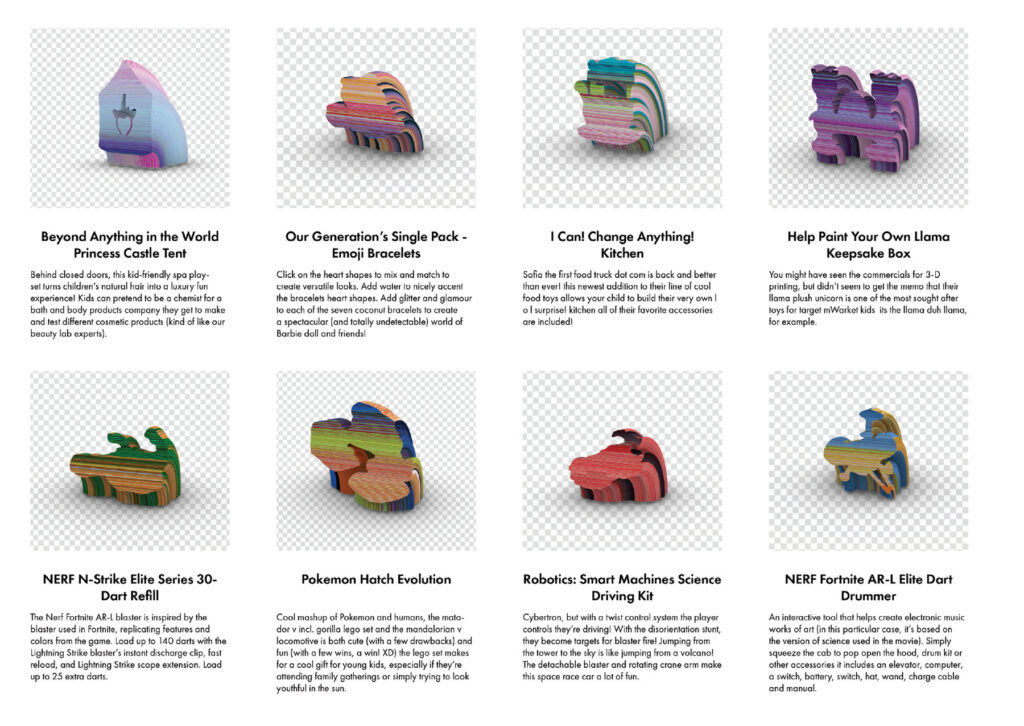
What are the main things you want people to take away from your work?
My hope is that they come away questioning their relationship with technology. I hope that the world opens up new ways of thinking about gender, biology, biotechnology, algorithms, equality and identity – so many of the things we talked about in this interview. I also hope it leaves them with a feeling, perhaps, the same way I feel after reading a good poem. I know that kind of magic is not going to happen every time, but that’s the dream.
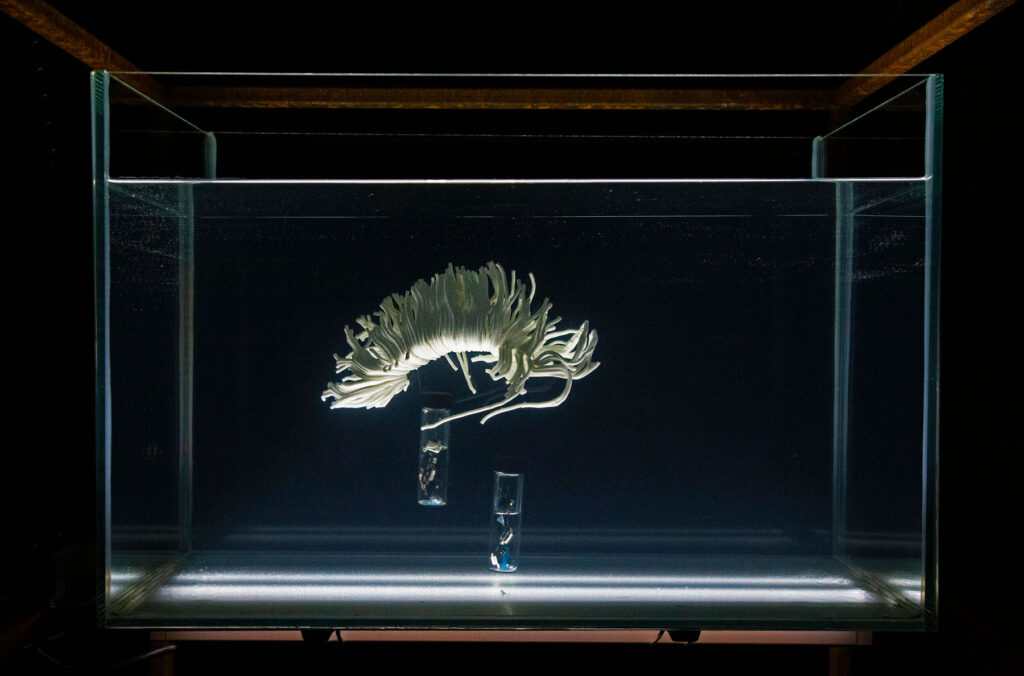
What can we expect from you in the future? Are there any other creative industries you can see yourself dabbling in?
I recently became a mother and have been re-learning my body and crafting new relationships with new bodies. I feel that I am engaging in physical processes that millennia of women and other birthing bodies have experienced before me. In my work, I have recently been trying to capture this messy experience of becoming. As a researcher, I have been delving into the history of birth, the history of medicine and technoscience as it relates to reproduction, gender, and sex. As an artist, I have been making vignettes of these first-hand experiences – of lactating, the waves of hormones through my body, the enormous emotions, the stretch marks, the contradictions of love, pain, exhaustion and branching of identities. It is all work in progress, and like life, I find that some things are better understood in retrospect.
Credits
Discover more here www.ani-liu.com
Images ANI LIU
